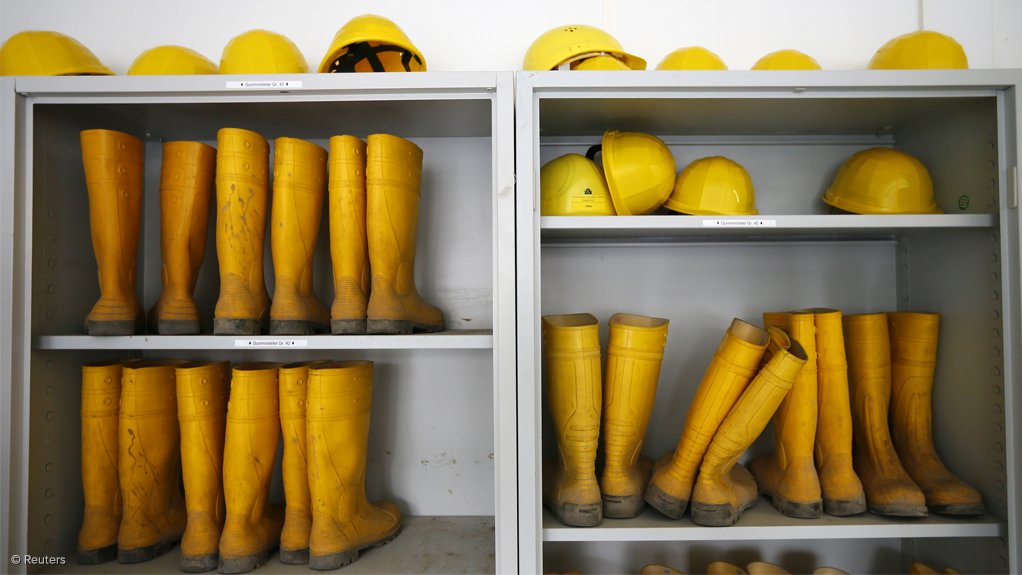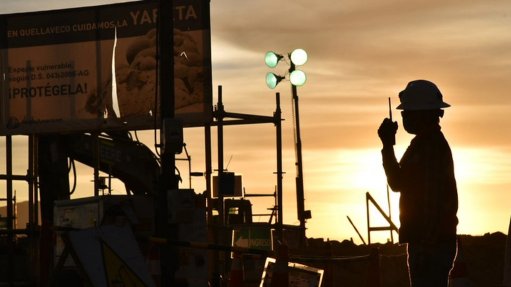Black Lung spreads to opencut mines, first case confirmed
PERTH (miningweekly.com) – The first case of Black Lung disease at an opencut coal mine has been confirmed, at mining major BHP Billiton’s Goonyella Riverside mine, in Queensland.
The Queensland Resources Council (QRC) said that the worker had been in the coal mining industry for more than 30 years, and had only been active in the opencut mining sector.
The latest case of Black Lung, which was discovered during a health assessment process, brought to 16 the number of affected individuals.
Worker’s union CFMEU’s mining and energy division district president for Queensland, Stephen Smyth, said workers and communities in all states and territories with underground and opencut coal mines were now at risk of the disease.
“It’s a myth that miners working in opencut mines are not exposed to high levels of coal dust or at risk of developing irreversible and fatal Black Lung and other dust related diseases,” said Smyth.
“So far, industry and governments have been assuming this problem is isolated to underground mines; we now know this is a false assumption.
“The union is again urging mining companies to immediately address dust levels in all coal mines and keep dust levels below legal limits.”
The QRC said that member companies were playing their part to action the recommendations from the government report and were committed to working together to ensure dust levels remain under the appropriate limit.
“It is vital that all parties work together to achieve the best outcomes for Queensland coal workers,” the industry body said in a statement.
In September, the Queensland Parliament appointed a six-person Parliamentary Select Committee to probe the re-emergence of the Black Lung disease, as part of the government’s three-pronged approach to contain the disease.
The strategy focuses on the prevention of new cases, early detection through better screening and a safety net for miners with coal workers’ pneumoconiosis.
Minister for State Development and Natural Resources and Mines, Dr Anthony Lynham on Wednesday told Parliament that elements of the government’s plan to protect coal miners were now part of the coal mining safety and health regulation, with tighter rules expected to kick in from January 1.
““We are tightening the rules around dust management, reporting and medical assessments for coal mine workers,” he said.
“From 1 January 2017 a number of measures that are practically already in place will become regulations, which means they will be required by law.”
The changes will require coal mining companies to regularly report dust monitoring results to the Mines Inspectorate, advise inspectors every time dust concentrations exceed prescribed levels, report known cases of certain occupational lung diseases, including coal workers’ pneumoconiosis, to the Department of Natural Resources and Mines, and provide respiratory function and chest x-ray examinations for retiring coal mine workers at their request.
Regulated changes to health assessments for miners would require new underground and above-ground coal mine workers to undergo a chest X-ray when they enter the coal mining industry, and above-ground coal mine workers to have respiratory function and chest X-ray examinations at least once every ten years.
Furthermore, current employees who are or have worked in an underground coal mine will need to have respiratory function and chest X-ray examinations at least once every five years.
Respiratory function examinations will also be undertaken as part of health assessments to be compared to a worker’s previous results where available, and chest X-ray examinations will be performed in accordance with International Labour Organisation guidelines.
Meanwhile, Smyth also said this new case of Black Lung disease was a warning to mine operators in other states with opencut coal mines, especially in New South Wales and Victoria.
“This should put all governments on notice – Black Lung disease is not just a threat to coal miners working in underground mines in Queensland, but to miners at all coal mines across Australia.
“This also underlines the importance of an industry levy to support a victims’ fund given the national significance of the issue.”
Comments
Press Office
Announcements
What's On
Subscribe to improve your user experience...
Option 1 (equivalent of R125 a month):
Receive a weekly copy of Creamer Media's Engineering News & Mining Weekly magazine
(print copy for those in South Africa and e-magazine for those outside of South Africa)
Receive daily email newsletters
Access to full search results
Access archive of magazine back copies
Access to Projects in Progress
Access to ONE Research Report of your choice in PDF format
Option 2 (equivalent of R375 a month):
All benefits from Option 1
PLUS
Access to Creamer Media's Research Channel Africa for ALL Research Reports, in PDF format, on various industrial and mining sectors
including Electricity; Water; Energy Transition; Hydrogen; Roads, Rail and Ports; Coal; Gold; Platinum; Battery Metals; etc.
Already a subscriber?
Forgotten your password?
Receive weekly copy of Creamer Media's Engineering News & Mining Weekly magazine (print copy for those in South Africa and e-magazine for those outside of South Africa)
➕
Recieve daily email newsletters
➕
Access to full search results
➕
Access archive of magazine back copies
➕
Access to Projects in Progress
➕
Access to ONE Research Report of your choice in PDF format
RESEARCH CHANNEL AFRICA
R4500 (equivalent of R375 a month)
SUBSCRIBEAll benefits from Option 1
➕
Access to Creamer Media's Research Channel Africa for ALL Research Reports on various industrial and mining sectors, in PDF format, including on:
Electricity
➕
Water
➕
Energy Transition
➕
Hydrogen
➕
Roads, Rail and Ports
➕
Coal
➕
Gold
➕
Platinum
➕
Battery Metals
➕
etc.
Receive all benefits from Option 1 or Option 2 delivered to numerous people at your company
➕
Multiple User names and Passwords for simultaneous log-ins
➕
Intranet integration access to all in your organisation





















